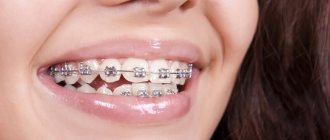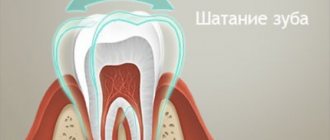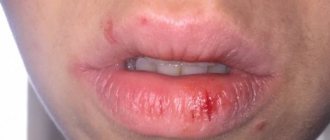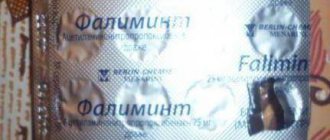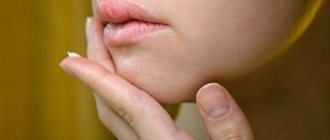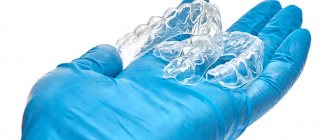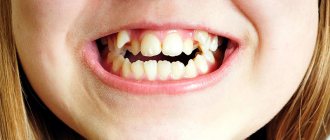What to do if your child has a fever? This question sooner or later arises in every parent who is concerned about the health of their child. But not all mothers and fathers know what temperature can and should be lowered. So, for example, in newborns and babies up to one year old the indicator is up to 37.5-38 degrees, which for us adults is considered elevated, and is the norm. The baby is one month old – does he have a fever? Reduce it only if it rises above 38-38.5.
As for older toddlers, for them this “threshold” is 39-39.5. If the thermometer shows a lower temperature, you should not knock it down. Remember that a child’s fever is an excellent opportunity for the body to fight the infection on its own. Give your baby the opportunity to boost his immunity!
How to reduce a child's temperature?
Now let’s talk about the medications that should definitely be in your first aid kit if a baby is growing up in the family. Thus, pediatricians prohibit the use of drugs such as:
- Aspirin;
- Analgin;
- Nise.
The baby can only be given medications that contain Paracetamol or Ibuprofen. Even if the child has no symptoms, they must be correctly calculated based on the baby’s weight and measured using a special syringe or measuring spoon. You should not use ordinary teaspoons for these purposes, and it is better to completely forget about the concept of “by eye”.
How to reduce a child's temperature?
Doctors advise using only one drug from the above - with Paracetamol or Ibuprofen in the composition. If the temperature drops poorly or does not drop at all, such medications can be alternated. But you can’t give your baby the combined drug Ibuklin.
Please note that it is not at all necessary to reduce the temperature to normal. It is enough just to knock it down a little for the baby’s well-being to improve at least a little. Don’t forget to feed your little one, because in case of high temperature the loss of fluid increases. Pediatricians say that babies need to drink 100 ml of water per 1 kg of weight.
Analogs
Level 4 ATC code matches:
Phenacetin
Combiflu
Chlorphenamine
Coldflu
Calpol
Fervex
Panadol Extra
Panadol for children
Panadol
Solpadeine
Efferalgan
Milistan
Coldrex Maxgripp
Coldrex Hotrem
Coldrex
AntiGrippin
Unispaz
Pentalgin Plus
Rapidol
Maxicold
There are quite a lot of analogues of the drug “children’s Cefekon” containing paracetamol.
Let's mention just a few of them:
- Paracetamol for children
- Panadol for children
- Tylenol for children
- Bindard
- Dynafed EX
- Volpan
- Dynafed junior
- Dafalgan
- Deminofen
- Calpol 6 plus
- Paracetamol MS
- Efferalgan
What to do if your baby gets chickenpox?
Has your child caught chickenpox? Of course, this acute viral disease can also cause high fever. How to proceed in this case?
The most important thing is to choose an antipyretic drug for your baby. Under no circumstances should you use Nurofen. To combat high fever during chickenpox, medications containing Paracetamol are suitable.
Indications for use
The drug is prescribed to children as:
- antipyretic: prescribed for influenza , ARVI , post-vaccination reactions, childhood infections and other conditions that cause an increase in body temperature;
- analgesic for pain syndrome: neuralgia , myalgia , headache and toothache, pain from burns and injuries.
What to do if your child has a fever?
Does your baby have a fever? Then you can’t hesitate - you need to urgently consult a doctor. Especially if it is accompanied by:
- rash;
- neck muscle tension;
- abdominal pain;
- vomiting.
But don’t panic: fever is typical for most common viral respiratory infections and high temperatures - about 40 degrees. This is how our body responds to infection. The pediatrician will simply examine the child and select the right treatment for him, taking into account the severity of the disease.
What temperature should be lowered in a child with influenza and ARVI?
High temperature forces the child's body to turn on its protective function. In this case, there may be a general deterioration in the form of malaise and headaches. The child becomes lethargic and whiny, which brings a lot of anxiety to parents. Before bringing down a child’s high temperature, you need to clarify significant nuances.
A slight increase in temperature does not lead to serious consequences and does not require any measures to be taken. Parents need to have reliable information about what temperature should be lowered. Improper actions can cause weakened immunity. There is a risk of developing possible complications and the disease may become protracted.
Cases when you need to bring down the temperature in children:
- 37.2-37.9°C (low-grade fever) – should be taken for newborns up to 2 months of age if indicated;
- 38.0-38.9°C (febrile) – antipyretics must be given in all cases;
- over 41.0°C (hyperthermic) - you need to call an ambulance if the drugs do not lower the readings on the thermometer.
It is necessary to call an ambulance if febrile spasms appear - this is intolerance to high temperature, an individual feature of the child’s body. This condition usually does not occur in children over 6 years of age (provided there are no pathologies in the central nervous system).
Chronic or acute diseases in cardiology, neurology or lung disease require lowering the temperature in children if the readings are above 38°C. Otherwise, complications from the heart, nervous system and respiratory organs cannot be ruled out.
If you have difficulty lowering your temperature, you should immediately seek medical help. If the thermometer has barely reached 37°C, and the child looks lethargic and his health is only getting worse, you should not expect a further increase in the readings on the thermometer.
Contraindications
Children under 1 month, hypersensitivity to paracetamol, chronic alcoholism. The drug should be prescribed with caution in diseases of the blood system, severe and liver dysfunction , genetically determined enzymatic absence of glucose-6-phosphate dehydrogenase.
Cefekon D - suppositories during pregnancy and lactation can be prescribed taking into account the benefits and risks for the pregnant woman and the child (fetus). Studies have not established the teratogenic, mutagenic and embryotoxic effects of paracetamol.
How to properly lower the temperature at home?
Effective folk ways to reduce fever without medications in children:
- A drink made from cranberries is a unique diaphoretic that reduces fever. The berry is useful for containing vitamins and accelerates the elimination of decay products.
- Chamomile tea is an excellent anti-inflammatory remedy. To prepare the infusion, pour a tablespoon of chamomile into a glass of boiling water, let it brew for 2 hours, drink up to 5 times a day.
- Elderberry decoction effectively helps reduce fever. It is enough to take 50 g of elderberry and pour boiling water (200 ml) over it.
- Linden tea – gives excellent results when consumed with honey. The child will sweat profusely, which will reduce body temperature due to the evaporation of excess moisture from the skin.
You can wipe the child's body with a terry towel moistened with water at room temperature. Applying a heating pad with ice to large vessels helps. Wrapping in a damp towel or sheet is also recommended.
Price Tsefekon D, where to buy
The price of Tsefekon suppositories for children 0.25 g No. 10 varies within 60 rubles per package. The price of Tsefekon D suppositories 0.05 g No. 10 is 25 rubles, and 0.1 g No. 10 is 50 rubles per package. You can purchase the drug in most pharmacies in Moscow and other cities.
- Online pharmacies in RussiaRussia
- Online pharmacies in UkraineUkraine
- Online pharmacies in KazakhstanKazakhstan
ZdravCity
- Cefekon D rectal suppositories.
250 mg 10 pcs. JSC "Nizhpharm" 56 rub. order
Pharmacy Dialogue
- Tsefekon D suppositories 100 mg No. 10Nizhpharm JSC
52 RUR order
- Tsefekon D suppositories 250 mg No. 10Nizhpharm JSC
57 RUR order
- Tsefekon D suppositories 50 mg No. 10Nizhpharm JSC
26 RUR order
show more
Pharmacy24
- Cefekon D for children 0.25 g N10 suppositories VAT "Nizhpharm", Nizhny Novgorod, Russian Federation
39 UAH. order - Cefekon D for children 0.1 g No. 10 suppositories VAT "Nizhpharm", Nizhny Novgorod, Russian Federation
45 UAH order
PaniPharmacy
- Cefekon D suppository Supp. cefekon D 0.25g No. 10 Russia, Nizhpharm
41 UAH order
- Cefekon D suppository Supp. cefekon D 0.1g No. 10 Russia, Nizhpharm
48 UAH order
show more
Medications
Before lowering your child’s temperature at home with medications, you must carefully study the instructions for use. Classic drugs can be bought in pharmacies, choose the dosage and form that is needed and choose the best option depending on age and indications.
The baby can only be given medications that contain paracetamol or ibuprofen. Paracetamol is contained in Panadol and Cefekon, ibuprofen is found in Nurofen and Ibufen. For babies, these products are available in the form of syrup, which, unlike tablets, has a sweet taste and is more convenient to dose.
Standard antipyretic drugs:
- "Panadol". Suitable for use on infants. The drug is indicated for colds, teething, otitis media, whooping cough and other infections. Prescribed to children aged 3 months and older in an individual dosage.
- "Efferalgan." Used as an analgesic and antipyretic. Rectal suppositories can be used to relieve fever in infants 3 months and older. Unlike medications taken orally, it does not cause vomiting and does not affect the gastrointestinal tract.
- "Ibufen." Has analgesic and antipyretic properties. In childhood, this drug is used in a dosage calculated depending on the weight and age of the child.
- "Paracetamol". An effective antipyretic and analgesic. It can be alternated with ibuprofen. If there is vomiting, you can use suppositories (suppositories).
- "Cefekon D". Available in the form of suppositories, recommended for use from 3 months to 12 years. Important advantages of the drug are its low cost and versatility. In addition to reducing temperature, it has an anti-inflammatory and analgesic effect.
A child's body can react to different medications differently, so you should experiment in practice to determine a more effective remedy, based on the pediatrician's recommendations.
When taking medications, you should follow a number of rules:
1. You cannot give several medications at the same time.
2. Drugs can be alternated, but the interval between taking medications should be 2-3 hours.
3. It is recommended to dose syrups using a measuring spoon or syringe, which are included in the kit.
4. If a child 1 year or younger is sick, it is recommended to use suppositories. Older children take tablets and capsules easily. Without a doctor's recommendation, antipyretic drugs can be prescribed to children for no longer than 3 days in a row and no more than 4 times a day.
5. Parents must understand that high body temperature is just a symptom indicating a specific disease. Taking antipyretics is not a treatment; it is only necessary to alleviate the child’s condition before the doctor arrives.
Pharmacodynamics and pharmacokinetics
Pharmacodynamics
Children's Cefekon has an analgesic and antipyretic effect. In the central nervous system, the drug causes a blockade of cyclooxygenase, thereby affecting the pain center and thermoregulation system. At the site of inflammation, the effect of paracetamol on cyclooxygenase is neutralized by cell peroxidase, which significantly reduces the anti-inflammatory effect. Cefekon does not negatively affect the gastrointestinal mucosa and water-electrolyte metabolism, that is, sodium water retention in the body is not observed.
Pharmacokinetics
The drug has high absorption and is quickly absorbed through the mucous membrane. Easily overcomes the BBB. Has high bioavailability. Distributed mainly in body fluids. Protein binding is insignificant (less than 10%). Metabolized in the liver. The maximum concentration of the drug in the blood occurs within 10-60 minutes after taking it. It is excreted by the kidneys in the form of inactive metabolites (sulfates and glucuronides).
What should you not give to children?
Reducing a child’s temperature is not difficult - today there are many drugs on sale that relieve fever in a short time. But first you need to consult with a qualified pediatrician, because self-medication can affect the baby's health.
If the readings do not exceed 38.5°C, there is no need to lower the temperature, because The body independently produces antibodies that help destroy viruses - so to speak, it fights the infection.
Medicines that are not recommended for children:
- amidopyrine, antipyrine and phenacetin (many side effects);
- acetylsalicylic acid (reduce the number of platelets, causing bleeding, allergic reactions, etc.);
- analgin and other drugs containing metamizole sodium as an active substance (side effects occur, such as suppression of hematopoiesis, severe allergic reactions, etc.).
These drugs are not recommended for use without the advice of a doctor. When you need to bring down the temperature, give preference to another medicine.
Is it necessary to bring down a child’s temperature to 36.6?
If, after using antipyretics, the readings decrease by 0.5°C within an hour, then the process is normal. Do not aim to reach 36.6°C immediately. This can cause serious overload of the child’s body, which can lead to a deterioration in overall well-being.
The ideal temperature would be 37-37.5 degrees. After some time, a jump may occur again. This occurs because the active component of the medicine is excreted from the body and ceases its effect. If several hours have passed after taking the drug, you can give the child another dose. It is very important to observe time intervals between doses and monitor temperature readings.
With an effective fight of the immune system against pathogenic microbes and with a competent approach to treatment, recovery, as a rule, is 3-5 days.
How to help a child’s body fight infection?
Regardless of whether you follow the recommendations on what temperature to lower in children, you must take care to create the necessary conditions for the patient. All family members should improve the quality of personal hygiene: wash their hands, wear disposable gauze bandages, etc. You also need to provide the child with separate cutlery and dishes.
Recommendations for a speedy recovery:
1. A sick child must remain in bed.
2. It is necessary to ventilate the room in which the baby is located (the influenza virus and other microorganisms are concentrated in musty air).
3. Care should be taken to humidify the air (at the same time, the mucous membranes of the nose and larynx do not dry out; this improves local immunity and promotes well-being).
4. You should ensure that you drink plenty of fluids (virus breakdown products are eliminated through the kidneys, which reduces the load on the body).
5. The baby’s clothes should be light, preferably made from natural fabrics.
6. It is considered normal for a baby to have no appetite. You should avoid spices, citrus fruits, and dairy products, which can cause irritation of the gastric mucosa. A hot bath at a high temperature is not the most pleasant feeling, but cool (not cold) water can help normalize the indicators.
7. It is recommended to use the bath together with antipyretics, and not instead of them. You can also get some relief by applying a cool compress to your forehead.
